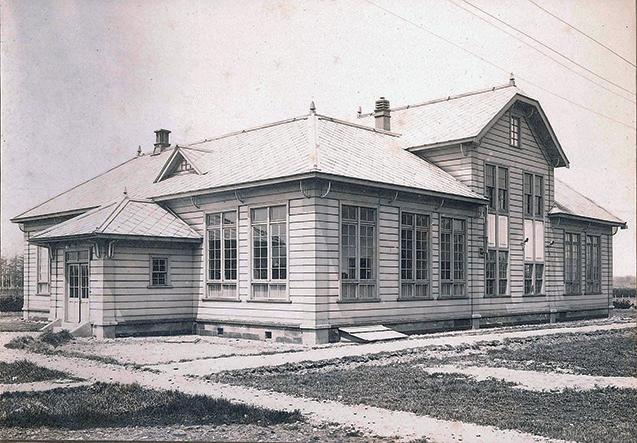
3 minute read
Making Hokkaido a Genuine Wine-Producing Region
As a region where grapes, sake rice, and barley are produced, the terroir (character of the land) of Hokkaido is now attracting attention. At the Laboratory of Applied Mycology (today’s Laboratory of Applied Molecular Microbiology), where a hygienic natto manufacturing method was developed in the Taisho era (1912 – 1926), Professor Teruo Sone, the sixth professor of the laboratory, is taking the lead to establish a technical support base for Hokkaido wines.

Hokkaido Winery
The effects of microbes on the taste of wine
Professor Sone, who is the sixth professor of the Labo-ratory of Applied Mycology, which was renamed to the Laboratory of Applied Molecular Microbiology in 2016, is performing vintage research.
He says, “Even if the same variety of grapes is used, wine flavors differ according to the winery and the field, and that is caused by microbial difference. Soil microbes affect the nutrients to be absorbed by the plants, and the microbes on plants have the function of suppressing diseases and molds. It would be great if we could unravel the secret of the complex and rich taste of wine based on the various functions of the various microorganisms.”

Teruo Sone, Professor, Research Faculty of Agriculture
Creating a new trend of Hokkaido wine
In April 2021, the Laboratory for Nouvelle Vague of Hokkaido Wines was established as an endowed course for research and human resource development intended to improve the quality of Hokkaido wines.
Professor Sone, who is responsible for the course, has revealed plans to provide specialized lectures where people working at wineries can obtain credits, and to develop food education events that connect Hokkaido wine and local specialties in collaboration with local companies. He says, “To make Hokkaido a genuine wine-producing region, Hokkaido University will serve as the basis of the wisdom and passion for the indus-try-academia-government collaborations.”
To create a new trend of Hokkaido wine, the labora-tory has taken a powerful step toward the establish-ment of the Hokkaido Wine Education and Research Center (tentative name) in 2023.

Opening ceremony of the laboratory in July 2021
Spirit of practical learning gleaned from natto bacteria
Professor Jun Hanzawa, who established the Laboratory of Applied Mycology in the Taisho era, made a huge contribution to the food industry as a researcher who developed a hygienic natto manufacturing method using purely cultured natto bacteria.
Since then, the laboratory has been conducting research on a wide range of microorganisms, including pathogens attached to rice plant, to help improve people's lives.

Building of the Laboratory of Applied Mycology (1916)
Hokkaido University Archives






